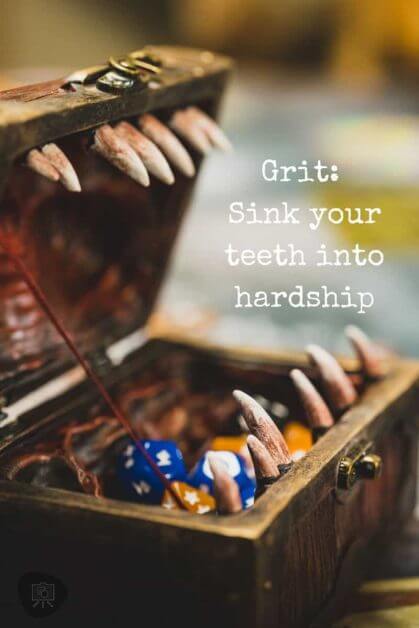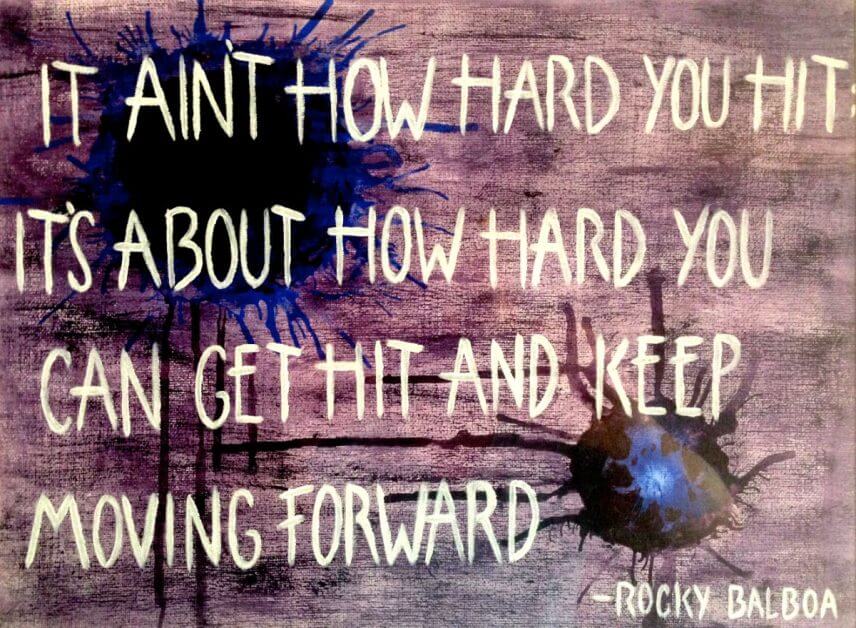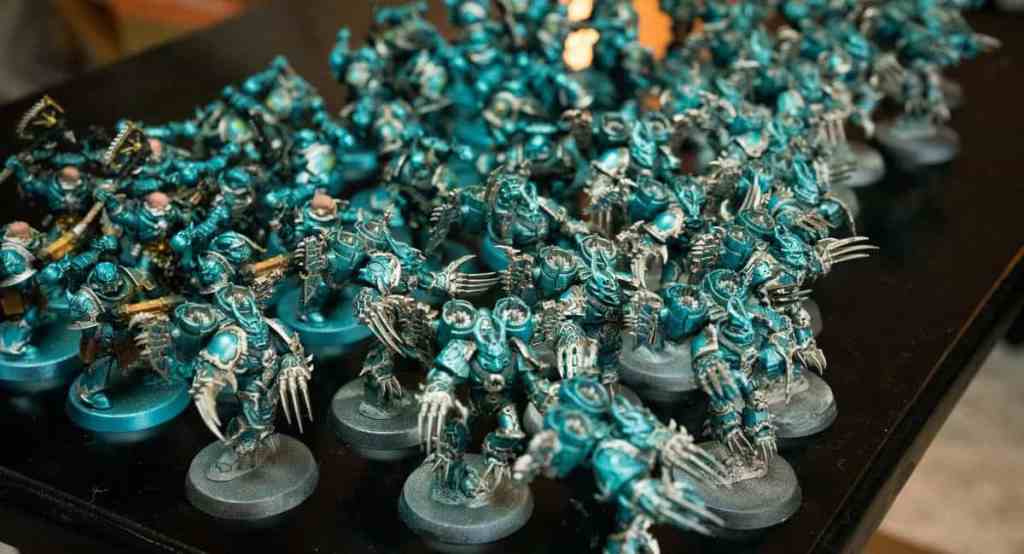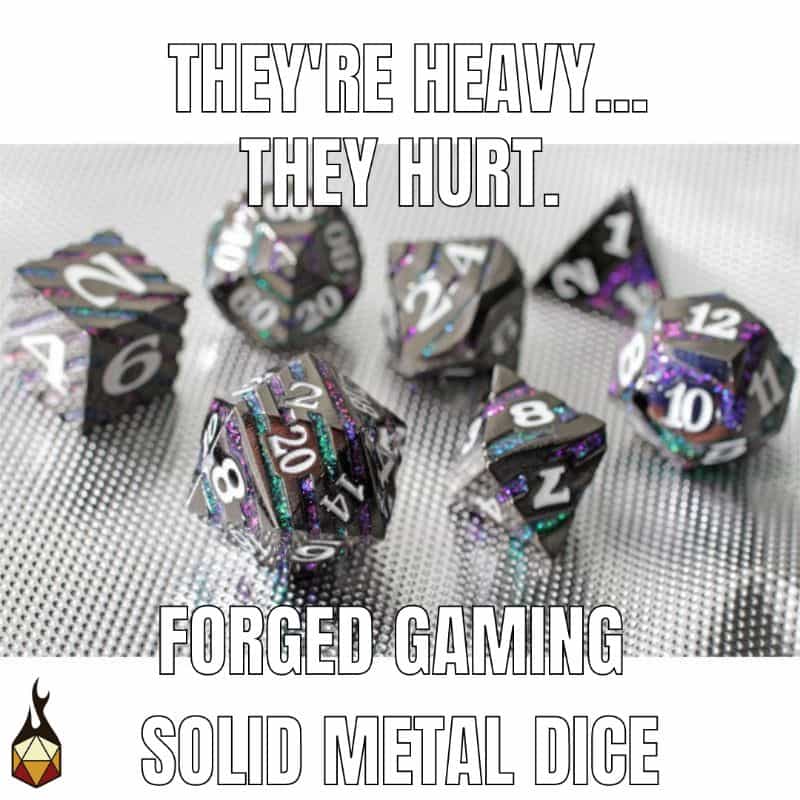Grit is a quality that is essential for any miniature painter. It’s what allows us to keep going when we’re painting something and it doesn’t look right, or when we’ve been working on the same miniature for hours and it’s still not done. It’s what helps us to learn from our mistakes and to keep improving.
In this article, I will be going over how having grit helps with painting miniatures and, in turn, can help you face life’s other challenges.
I will be using miniature painting as a case study, but any sort of endeavor or difficulty should also be relevant to the points I’m going to make. Grit is a universal human trait empowers us to thrive and grow despite adversity.
What is Grit?
Grit is your ability to work hard in spite of adversity. It is the mental endurance you need for those especially challenging tasks, like finishing a painting, or learning the guitar.
The dictionary definition of grit is “courage and resolution in the face of hardship.” I think that’s pretty simplistic to what it really means. Grit is an underrated human trait that implies a deep, ingrained instinct to endure overwhelming challenges. “Perseverance” is the word I often think of when I think about grit.

Grit isn’t just about being strong; it’s also about having mental endurance. It allows you to get through difficult tasks (no matter if they ‘re physical or mental), and to see them through to the end.

In order for something to have value, it has to be difficult. The deeper you go in a subject, the more challenging it will become. Grit is what allows you to take those challenges head-on without being discouraged by them. If you want success, grit is the way to go.
Benefits of Grit
- Grit allows you to work hard in spite of adversity
- It is the mental endurance you need for those especially challenging tasks
- Grit helps you to learn from your mistakes and to keep improving
- It ‘s what allows you to keep going when things don’t look right
- Grit is essential for any miniature painter
- Having grit can change your life and art
- It’s what allows us to keep going when we’re painting something, e.g., a contest piece, or tabletop Warhammer model, and it doesn’t look right and we want to give up, but don’t
How Do I Know if I Have Grit?
Grit is something you show, not tell. It’s also not something that can be immediately discerned upon meeting someone; it has to be shown over time.

Here are four questions that can help you determine if you have grit or not:
1.Do You Like Doing Difficult Things?
Do you like doing difficult things, even when they get really challenging? Are you always feeling like going above and beyond your (or others’) expectations in everything that you do? Do you believe that the harder something is, the better it is (regardless of what others say)? If so, then grit is definitely something that you have.
Yes, I hear some of you think that this kind of personality has some arrogance built-into it. But, I’ll clarify that this is more likened to the idea that grit is also a part of “confidence”. In this case, confidence is a feeling of self-efficacy that comes from the tested knowledge of one’s abilities or qualities (source). On the other hand, arrogance is more of an exaggerated sense of self-importance or over-estimation of one’s abilities.
As mentioned above, only time and testing will tell if your grit is true or not.
2. Do You Keep Going When Things Don’t Look Right?
If I’m stuck on a miniature painting and want to give up, but I know that the only way to improve is to continue (which will be extremely difficult), then I grit my teeth and keep going. Every miniature painter has been there, so you know that it’s not easy. What you decide to invest your effort into, despite dejection, frustration, and discouragement, will reveal your level of grit.
3. Do You Learn From Your Mistakes?
Making mistakes and learning from them shows that you have grit. If you keep making the same mistakes without learning anything, or if you refuse to admit that you’re making mistakes, then you need to work on yourself more. Maybe there’s a little whiny boss in your head holding you back.
Only by understanding what went wrong can we move forward, so if your mistakes/failures are ignored or denied, then everything will be repeated over and over again. When you learn from your mistakes, you’re not only expressing grit, but you’re applying humility. Embracing humility is how you develop grit.
4. Are You Resilient?
Resilience is similar to mental endurance, but it’s about being creative when you’re out of ideas. If you come into a particularly difficult task that you’ve never done before, how do you react? Do you accept the challenge head-on, or whine and complain because you don’t want to do it?
Perhaps your default response to challenge and difficulty is to complain, instead of searching for a solution. Using your creativity and imagination as the first-response to challenge requires resilience. When problems emerge, a resilient person with grit will think, “oh, here we go again–let’s figure it out!”.
Why Grit is Important for a Miniature Painter
A lot of people think that grit is something that you’re born with, but it’s actually something that you can develop. The best way to develop grit is to set goals and then work towards them. You need to be willing to put in the hard work, even when you don’t feel like it, and you need to be able to persist through setbacks.

In case you’re wondering what has anything to do with creativity, it’s actually more important than ever as we become increasingly busy due to the advancement of technology and work on a global scale. You can’t be creative if you don’t have time or energy–Grit tells us that if things get tough, we should keep pushing on instead of giving up.
The need for grit is essential in the miniature painting community, where we do the hobby primarily for fun. I think that having grit, or perseverance, is an essential part of any hobby, because without it you’ll never complete your projects. With miniature painting, having enough grit is the difference between finishing that first project and not starting at all because you’re discouraged by mistakes or slow progress.
Grit is What Makes Painting Miniatures Worthwhile
Painting miniatures can be really challenging (especially for beginners). Even when you’ve been painting for a while, you’ll run into roadblocks that will make you ask yourself why you’re doing all of this work. You may want to give up. That’s when you have the most to gain from grit. Without it, you’ll never get out of those slumps and your painting career will be a long series of fits and starts as you struggle to finish a project that looked so promising at first.
No grit, no reward. In fact, the lack of grit is a bigger problem than we may think.
Every time a tiny painter completes a task, whether they love it or not, the unnoticed benefit is that you have a sense of achievement. When you give up midway through a project because you got bored or discouraged, the obvious risk is that your pastime has become associated with an undesirable cue. This latter experience plays into breaking down or removing the grit instinct. You can lose grit when you quit too early.
What Grit Can Teach You About Yourself
Grit tells us that if things get tough, we should keep pushing on instead of giving up.
I think that having grit is more important in the miniature painting community than in most other hobbies because it’s very easy to become discouraged in this art.
Miniature painters are often perfectionists, and that makes it really easy for us to become frustrated or upset with ourselves when things don’t turn out the way we want. We’re painting miniatures, for crying out loud- they’re supposed to be small! This makes it really easy for us to get discouraged and quit when a project is taking too long or isn’t turning out well.
Grit helps you to learn from your mistakes and to keep improving.
Developing Grit: How to Become More Gritty
Grit is something that I think about a lot when it comes to my hobby of miniature painting. When I was still fairly new at the hobby, and I heard other people talk about their own struggles and triumphs in painting (and of course, LIFE), it occurred to me that you can develop grit just like anything else.

I’m not saying that I was naturally low on grit before, or that I thought everything in miniature painting should be easy for me. But I knew about grit and how it plays a role in your life, so I decided to see if there were ways to increase my own . I was fortunate enough to discover that grit can be learned and developed- it doesn’t just come out of nowhere.
I even set some personal goals for myself to increase my own grit, which not only helped me with painting but made other aspects of my life easier (like work or school).
Let’s look at the science behind grit:
Grit is a personality trait that is characterized by passion and perseverance. People who are gritty are more likely to achieve their goals, even when faced with setbacks.
The best way to develop grit is to set goals and then work towards them. You need to be willing to put in the hard work, even when you don’t feel like it, and you need to be able to persist through setbacks.
Set some long-term goals. Gritty people set both short-term and long-term goals. Short-term goals are things that you can check off on your way to reaching the main goal, like painting up a test model or two to see how your paints work together before starting an actual project.
Long-term goals are things that require a lot of planning and time to complete, but they’re the endgame.
Don’t give up. Give yourself a sense of purpose by imagining your future self having attained what you’re working towards . Gritty people don’t give up when things get hard- they keep going.
Here’s some tangible things you can to do to practice grit in miniature painting:
- Break down a painting project into very, very small pieces. When I say this, I mean TINY. Plan to paint only a single color for 5 minutes. Or, just set the goal of base coating a single element on your model, such as just painting the cloak or shirt.
- Work in short spurts of no more than 10 minutes. When you have 10 minutes of free time, plan to paint as much as you can in this time period. I recommend that you use a wet palette, so you can keep your model paints wet and useable for longer, even if you stop painting.
- Don’t pressure yourself to finish. I find that mini painters tend to fall in one of two categories: they either paint very slowly and meticulously, or they want to work through parts of their project in large chunks. Neither is right or wrong, but the important thing is that you’re happy with your own rate of progress.
- Work on models you’re excited about. This will keep you motivated in the long run. If there’s a type of model that you’re really not interested in, working on it might be more like torture than fun. Of course, if you HAVE TO paint models for a particular army collection you have, then you’ll have to find a way to get through them. You are working on your grit, right? In this case, check out the tips above: break down the project into small pieces; shorten the timeframe you paint, etc.
- No shortcuts! I know that miniature painters can be really tempted to try things like dry brushing or other techniques that are considered ‘faster’ than classic painting methods. But if you want to be a truly gritty miniature painter, you need to learn the right way of doing things, too.
- Accept that painting that model won’t always feel worth it in the moment. Sometimes painting a model will take longer than expected, or it’ll look bad when you’re done with it. Or, you might end up feeling frustrated by how long a model is taking you. I recommend that you keep a level head about these things and practice a little self-care, like going for a walk and taking frequent breaks (but always come back after a period of R&R).
- Avoid perfectionism. Try not to let the project overwhelm you with its size. Make sure to be proud of your work, but don’t beat yourself up if it’s not perfect. You’ll never be able to paint every model to perfection the first time around, but you can work on getting better as you go along! So don’t give up!
How Grit in Miniature Painting Applies to Bigger Life Goals
Since grit is a big contributor to success in miniature painting, it can also affect the way you approach other challenges beyond your hobby painting or wargaming table. For example, if you have a long-term goal of being a full-time artist (or anything else that requires talent and ambition), then you’ll need as much grit as possible.

What does grit look like in the non-hobby life? How do you “do gritty”?
Be willing to fail. Failures are actually really helpful, because they help you learn what doesn’t work and how it can be corrected. Try setting milestones for yourself that seem challenging, but attainable (by the way, here’s some tips about setting goals). Be flexible with your timelines, but also make sure to go after things of value.
Try not to get discouraged when you’re on a long journey towards a big goal. This is another thing that happens in miniature painting! If you plan on getting good at something, it will take time–so allow enough of that for yourself! Also, realize that some failures are more bittersweet than others, so don’t be too hard on yourself.
The grit you develop for painting miniatures is the same for daily life.
In our earlier example of a time-consuming miniature painting project, I mentioned that it can become overwhelming when you paint larger pieces. But guess what? That feeling of being overwhelmed is actually pretty familiar to anybody who has been working towards a big goal for a long time.
So if you’ve ever felt like giving up on something because you didn’t think it would work out in the end, turn that mindset around and think about how to use it towards your advantage!
Make sure to do some research (if possible) before committing fully to the big goal, but don’t let yourself be overwhelmed by the research process. If you’re anything like me, the more research you do, the more it will show you what’s possible and encourage you to try!
Final Thoughts
Grit is an important factor in miniature painting, and it can also help you achieve other goals in life. It’s essential to be willing to fail, be flexible with timelines, and not get discouraged easily. By practicing these things with miniature painting, you may discover that it’ll help you succeed in other areas of your life!
And as always, happy (and gritty) miniature painting!




Tangible Day on YouTube (Miniatures and More!)


Pingback: How Grit Helps With Miniature Painting: Are You Gritty? - Toy Newz